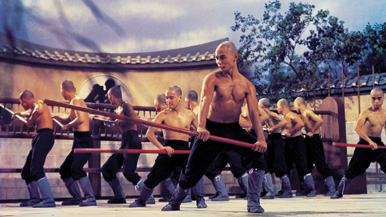|
|
Viking Night - Shawtober September Part III: The 36th Chamber of ShaolinBy Bruce HallSeptember 20, 2017
As you can imagine, most of the film is devoted to San Te’s journey through the Chambers. Each represents one of the many disciplines the monks must master in order to do all the kickass things Shaolin monks can do. The Chambers themselves are not so much the point of the film (although there’s a really neat twist to that) as is the fact that they are also used to represent San Te’s growth from eager boy to well-tempered adult. They are meant to instill in students the temperament necessary to properly wield great power, and to understand that the greatest demonstration of that power is in NOT using it. That flies in the face San Te’s mission, and it is implied the monks knew this when they allowed him to train. His intention is to use his knowledge to train others to resist the government, and perhaps the monks see him as a way to covertly exert influence over the situation. Who can say. What can be said is that 36th Chamber is an outstanding shell of face-pounding action with an uplifting arc of individual growth at its nougaty center. But Gordon Liu’s amazing physical gifts and Liu Chia-Liang’s gift for filming them are only part of the story. San Te’s odyssey through the mystical backdrop of Shaolin is engaging as much in the visual sense as the visceral. And by the time San Te inevitably returns to his village, his actions carry the weight of our investment in him as viewers. It’s the same Chinese Hero’s Journey as most similar films, but 36th Chamber is an example of formula being done well enough that you almost forget the formula. Almost. As a child, I just wanted to get to the part where the guy wails on the dudes who killed his family back at the beginning of the story. I never knew then how much I enjoyed this movie for the actual narrative as I did the sensational stunts. San Te is a guy you can get behind, and The 36th Chamber of Shaolin makes me feel even more like a kid again now that I understand it well enough to appreciate WHY I love it. And now, hopefully you do too.
|

|
|
|

|
Friday, April 19, 2024
© 2024 Box Office Prophets, a division of One Of Us, Inc.


